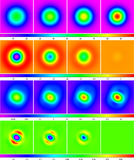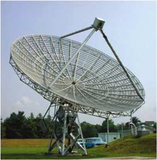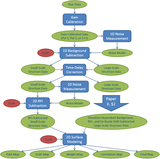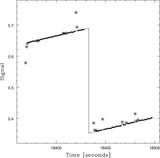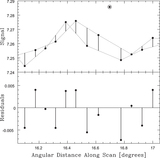Image Details
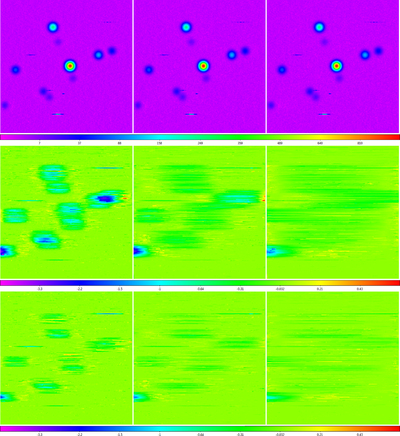
Caption: Figure 17.
Top row: data from Figure 16 background-subtracted, with 6 (left), 12 (middle), and 24 (right) beamwidth scales (the map is 24 beamwidths across). Middle row: data from the top row (1) minus the data from Figure 16 (residuals) and (2) minus the Gaussian random noise residuals from the bottom row of Figure 14 (for greater clarity). Small-scale structure residuals are biased negative, but typically by at most ≈1/2–1 (left), ≈1/4–1/2 (middle), and ≈1/8–1/4 (right) of the noise level and independently of the brightness of the proximal small-scale structure (point source or short-duration RFI). Larger values are possible when small-scale structures blend together into large-scale structures in the scan direction, where the division between small and large scales is given by the background-subtraction scale. Larger values are also possible when small-scale structures occur near the ends of scans. Noise-level biases can be ignored for all but the lowest-S/N sources (see Section 4) and are further mitigated by our RFI-subtraction algorithm in Section 3.6.2 and by our large-scale structure algorithm in Paper II. Bottom row: same as the middle row, but for more realistic, less winged sources (given by Equation (9) with θRFI = 1 beamwidth and z0 = 0; see Figure 31); residuals are ≈2–3 times smaller in this case. Locally modeled surfaces (Section 1.2.1; see Section 3.7) have been applied for visualization only. Square-root and hyperbolic arcsine scalings are used in the top and bottom two rows, respectively, to emphasize fainter structures.
Copyright and Terms & Conditions
© 2019. The American Astronomical Society. All rights reserved.




